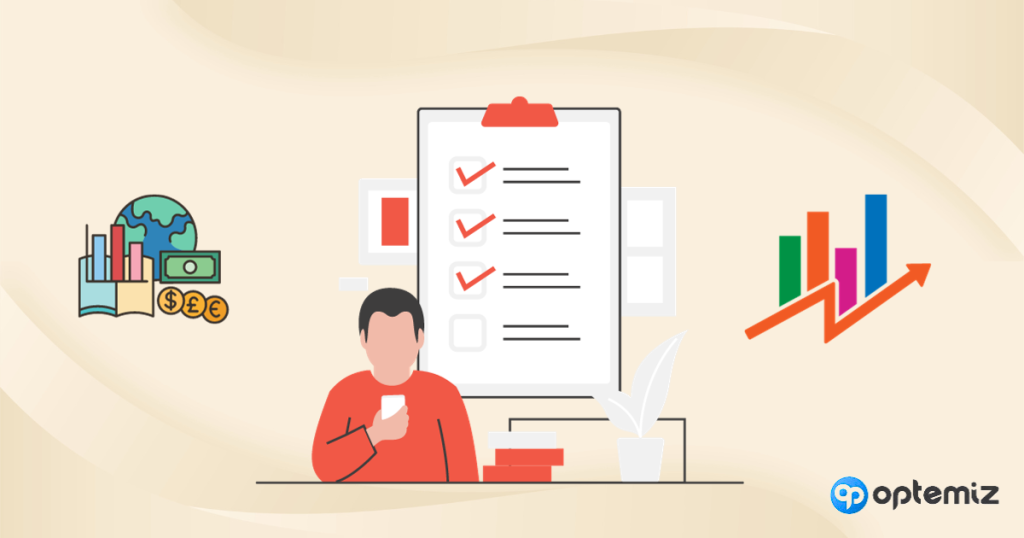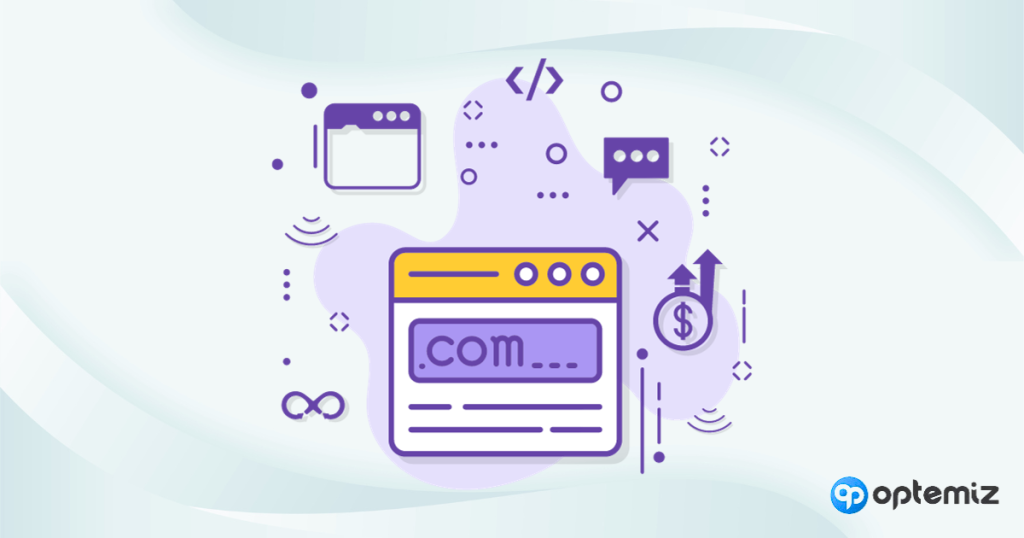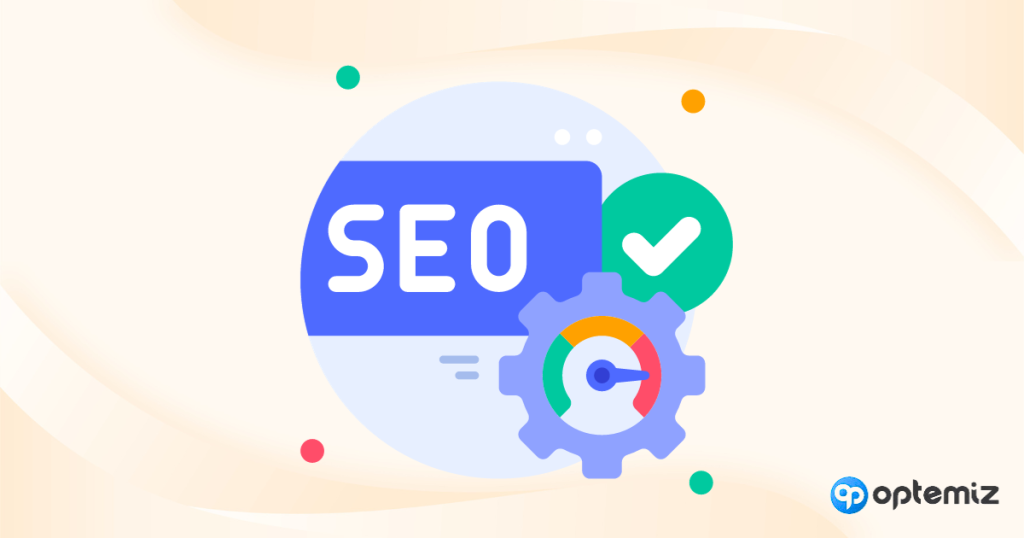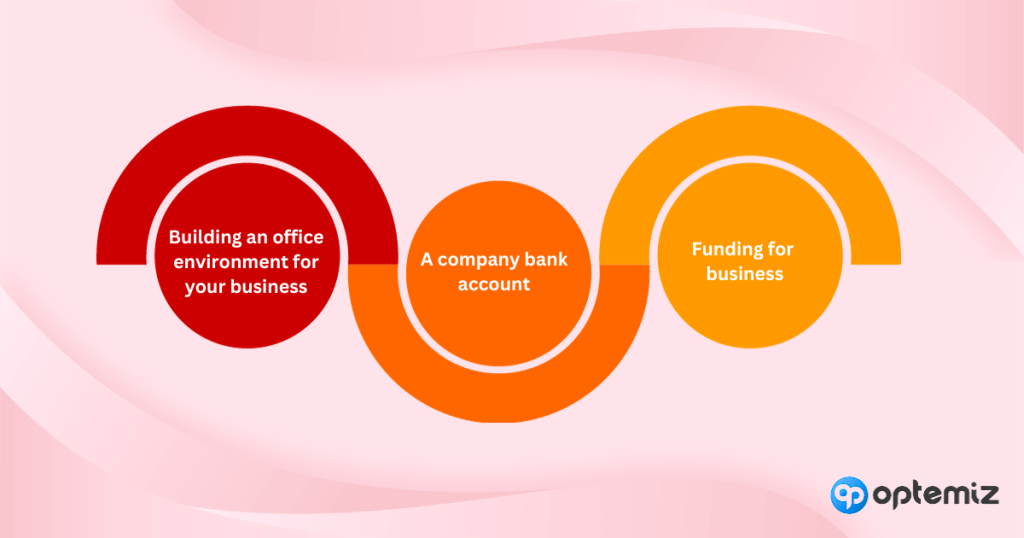Hey, do you want to make a complete checklist for starting an online business at the end of this year? You made the best decision!
A business checklist is a documentation of steps to complete a specific task. In this paper, you will write all your business goals, prior needs, future objectives, and building a business itself.
Nowadays, building an online business takes work. Many experts would suggest otherwise but consider that you have many regulations to follow, new trends, tools to use, and building an online platform. These tasks will require separate attention and, as time passes, are hard to manage.
However, one thing to agree with the experts is that although online business looks hard, they are still manageable. You must complete different tasks in a specific pattern while maintaining your plans. An achievable checklist can work for you!
What is a Business Checklist and Why You Should Care?

A business checklist is a structured list of tasks, objectives, or milestones that you should accomplish to start or manage a business successfully. It serves as a roadmap, guiding you through the various phases of your business journey. Moreover, it can help you prioritize what needs immediate attention and what can wait, making your operations more organized.
So, why should you care? Well, running a business involves juggling many responsibilities. A checklist provides you with a tangible way to keep track of those responsibilities. It reduces the likelihood of missing critical steps or making costly mistakes. Additionally, it can significantly ease the stress associated with the numerous tasks you have to handle.
Furthermore, a business checklist fosters a culture of accountability. When tasks are laid out clearly, it’s easier for everyone on your team to know what is expected of them. It also provides a sense of accomplishment as you tick off completed items, fueling motivation and boosting productivity.
In essence, a business checklist is not just a piece of paper or a digital note; it’s a strategic tool that can significantly influence the success of your business. Therefore, investing time in creating and maintaining a thorough business checklist is not merely an option; it’s essential for the sustainable growth of your business.
10 Checklist for Starting an Online Business
It can get pretty complicated to know where to start, what niche you should take, or the most important statement, “Will I achieve success?” You have to conquer these questions and go forward. A proper mindset and planning can help you crack the code to attain what you desire the most, ultimately, an online successful business.
1. Conduct market research

Understanding your target market is the cornerstone of any successful business. Start by identifying who your potential customers are, what they need, and what problems they face that your product or service can solve.
Utilize tools like Google Trends or customer surveys to obtain quantitative and qualitative data. Additionally, scope out your competition. Who are the key players in your industry? What are they doing right or wrong? The insights you gain from this research are invaluable, as they guide you in making informed decisions and tailoring your offerings to meet market demand.
Here is a summary,
- Identify your target audience and their needs.
- Use tools like Google Trends or surveys to gather data.
- Analyze competitors to find your unique selling proposition.
- Validate product demand before committing resources.
- Use the findings to refine your business idea.
2. Draft your business plan

Creating a precise business plan involves more than just jotting down a few ideas. You’ll need to outline your short- and long-term business objectives clearly. Describe your operational plans in detail, from procurement to customer service.
Financial projections, including a budget and revenue forecast, should also be included. A tool like a SWOT analysis (Strengths, Weaknesses, Opportunities, and Threats) can offer a structured approach to evaluate where your business stands in the marketplace. Your business plan should be a living document, updated regularly to reflect changes and trends in your industry.
Here is what should never do while drafting a business plan,
- Be sure to complete the research phase, as data is essential for a credible plan.
- Try to be realistic about financial projections that can’t be substantiated.
- Never ignore the competition or market trends, as they are key factors affecting your business.
- Refrain from using jargon or complex language that makes the plan challenging to understand.
- Being vague about your business objectives can be dangerous and people around you might lose focus; be specific and measurable.
- Include all legal obligations, permits, or licenses your business needs.
- Always include a marketing plan outlining how to attract and retain customers.
- Never rely solely on your perspective; seek feedback from trusted advisors or stakeholders.
3. Fulfill legal requirements
Starting an online business isn’t solely about the creative and financial aspects; you must also ensure you’re legally compliant. Register your business name and decide on your business structure (Sole Proprietor, LLC, Corporation, etc.).
Acquire any necessary permits and licenses. This varies by jurisdiction and the type of business you’re in. Familiarize yourself with tax requirements, and consult a tax advisor to understand what sales tax, income tax, and other tax obligations you’ll be responsible for. These steps help protect you from legal complications down the line.
4. Choose your domain name & secure hosting

Your domain name serves as the web address where visitors can access your site, so it should be reflective of your brand and easy to remember. Examples include “CraftsByYou.com” for a craft business or “TechSolutionsOnline.com” for a tech consultancy.
Once you’ve chosen a name, you must secure it through a reliable domain registrar. Web hosting is another critical element; your choice of host will affect your site’s performance and uptime. Opt for a hosting service that offers solid customer support, adequate speed, and secure data protection features like SSL certificates.
Follow these instructions for a domain name,
- Start by brainstorming keywords relevant to your business or niche.
- Ensure the domain name is easy to spell, remember, and type.
- Check for trademark issues to avoid legal complications.
- Aim for a “.com” extension, as it’s the most recognized and trusted.
- Use domain search tools to check availability and get suggestions.
Follow these instructions for securing a hosting service provider,
- Determine your hosting needs, such as expected website traffic and required storage space.
- Compare hosting types like shared, VPS, or dedicated to find the best fit.
- Research hosting providers, focusing on uptime, speed, and customer reviews.
- Consider the scalability options to ensure the host can accommodate your business as it grows.
- When making your final decision, look for additional features like SSL certificates, backups, and customer support.
- You will also need the best hosting service provider for your website.
5. Develop your website

This step is the starting point that will support your entire business operation. So, be careful at this stage.
The design and functionality of your website can make or break your online business. Choose an e-commerce platform that aligns with your business needs—Shopify and WordPress with WooCommerce are popular options. The design should be clean, intuitive, and mobile-responsive, as most web traffic comes from mobile users. Incorporate necessary features such as a shopping cart, product descriptions, a payment gateway, and contact information.
Once your website is live, ongoing tasks include Search Engine Optimization (SEO) for better search rankings, regular updates, and adding fresh content to keep your audience engaged.
Here is what you need to look out for,
- Choose an e-commerce platform suitable for your business (e.g., Shopify, WooCommerce).
- Design the site to be user-friendly and mobile-responsive.
- Add essential features like a shopping cart, product pages, and a payment gateway.
- Optimize for SEO to improve visibility on search engines.
- Regularly update the site with new products, blog posts, or customer reviews
6. Integrate a payment gateway
Integrating a reliable payment gateway is more than just a technical requirement; it’s the linchpin of your sales process. Consider multiple factors such as transaction fees, payment methods offered, and the geographic reach of the gateway.
Payment providers like Stripe, PayPal, and Square offer various customization options and are renowned for their security features. Making the right choice can significantly influence your sales conversion rates and customers’ trust level in your business.
These instructions will help you a lot,
- Ensure compliance with security standards like PCI DSS
- Verify compatibility with your ecommerce platform
- Be aware of transaction fees and other costs
- Support multiple payment methods to suit customer preferences
- Offer a straightforward and intuitive user experience
- Accommodate relevant regions and currencies
- Choose a reliable gateway with high uptime
- Understand refund and dispute handling procedures
- Conduct testing before finalizing your choice
7. Create an SEO and marketing strategy

You will need to beat your competitors and showcase your products before them. But, to that you will have to gain top spot in SERP and other social medias. You will need the best SEO strategies for an eCommerce website to achieve it.
An effective SEO and marketing strategy is not a one-off task; it’s an ongoing effort that evolves with your business and market trends. Beyond initial keyword research and basic on-page SEO, think about creating high-quality, value-driven content that speaks to the needs and interests of your target audience.
You might also consider leveraging influencer marketing, paid search advertising, and retargeting campaigns. Tools like Google Ads and Moz can help you fine-tune your strategies, based on real-time performance data.
To get started, here are the basics of SEO,
- Begin with keyword research to identify search terms relevant to your business.
- Optimize your website for these keywords and improve on-page SEO.
- Use Google Ads for paid search advertising and target specific customer segments.
- Create valuable, shareable content for SEO and social media.
- Monitor performance with tools like Moz or Google Analytics.
8. Implement analytics and track performance
You might have a website, marketable products, a secure platform, and SEO, but nothing will work without having precise analytics data from your prospects.
Implementing analytics is essential for evaluating the health and growth of your online business. Beyond just counting website visits, sophisticated tools like Google Analytics or Adobe Analytics can provide deeper insights into user behavior, sales conversion funnels, and customer retention.
Use these insights to adjust your marketing strategies, improve website design, and optimize the customer experience. For instance, if your analytics reveal that users often abandon their shopping carts, you may need to simplify the checkout process.
9. Set up customer service solutions

Quality customer service involves more than just fielding complaints and queries. It’s an end-to-end process that starts with the initial interaction and continues through the purchase and beyond.
You can utilize AI-powered chatbots for immediate responses, employ a ticketing system for tracking issues, or set up a dedicated hotline for more complex inquiries. CRM systems like Salesforce or Zendesk can be highly effective for managing customer relations in a more structured and data-driven way.
You can,
- Consider using chatbots for instant customer support.
- Implement a ticketing system to track and resolve customer issues.
- Offer multiple channels like email, phone, and live chat for customer inquiries.
- Use CRM tools like Salesforce to manage customer relationships.
- Train your customer service team to be responsive and knowledgeable.
10. Plan your product and finally, service a launch
Launching a new product or service is a critical phase that demands meticulous planning. A well-designed launch strategy will include multiple components like public relations, social media buzz, influencer partnerships, and a launch event, virtual or physical.
Employ A/B testing to fine-tune your promotional messages and consider running a ‘soft launch’ with a smaller audience to collect feedback. This feedback can be invaluable for making last-minute adjustments before you go public.
3 Crucial Steps Required for Later Phases of Your Business

In the start of your business, you will not need them, like a bank account. But, as your business progresses, you will need them eventually.
1. Building an office environment for your business
The need for a formal office environment may become apparent as your online business grows. Whether it’s a remote setup or a physical office, a well-organized workspace can boost productivity and team morale. For instance, companies like WeWork offer flexible co-working spaces that can be a good starting point for smaller teams.
2. A company bank account
A separate bank account for your business is essential for clean financial management. It helps you keep track of expenses, manage cash flow, and make tax filing easier. Banks like Chase and Wells Fargo offer specialized business accounts with features like low transaction fees and high monthly deposit limits.
3. Funding for business
To scale your business, external funding might become necessary. Various funding options like angel investment, venture capital, or small business loans are available. Websites like Kickstarter can also offer a way to crowdsource funds for specific projects. Ensure that you have a robust business plan in place to attract potential investors.
Necessary Resources You will Need for Your Business

So you secured the checklist and planned later steps, what’s left now is using the right tools. You will be glad to know that millions of online tools and services can help you build a website and start a business in seconds.
To get started, you will have basic knowledge about different types of tools and how they provide the service. Most recognized services like Shopify, Stripes, WooCommerce, SEMrush, and Canva provide in depth knowledge over their product.
Below, we share with you some of the key services you will need to build your business and sustain it afterwards.
A. eCommerce platform
An eCommerce platform is your online storefront where customers can browse and purchase your products. Shopify, Magento, and WooCommerce are the titans in this space, offering features that can scale with your business.
Examples:
- Shopify: Known for its user-friendly interface and extensive app marketplace.
- Magento: Offers high customization but requires some technical know-how.
- WooCommerce: A WordPress plugin, ideal for smaller businesses and startups.
B. Domain name and web hosting
Your domain name is the web address where visitors can access your site, while web hosting makes your website accessible on the Internet. They are the backbone of your online presence.
Examples:
- Bluehost: Offers hosting services with a free domain name for the first year.
- GoDaddy: Known for domain registration and budget-friendly hosting options.
- HostGator: Provides various hosting plans with good customer support.
C. SSL certificate for secure transactions
An SSL certificate ensures that any data exchanged between your server and the visitor’s browser is encrypted, instilling customer trust.
Examples:
- Let’s Encrypt: Offers free SSL certificates with a focus on simplicity.
- DigiCert: Known for high assurance SSL certificates and strong customer support.
D. Payment gateway providers
Payment gateways are services that authorize and process payments. They are vital for handling transactions securely and efficiently.
Examples:
- Stripe: Simple to integrate and offers a variety of payment options.
- PayPal: A widely-accepted payment gateway known for its security.
- Square: Ideal for both online and offline transactions.
E. Inventory management system
An inventory management system allows you to keep track of stock levels, orders, and deliveries, simplifying operational challenges.
Examples:
- QuickBooks Commerce: Offers robust inventory and order management features.
- Zoho Inventory: Known for its user-friendly interface and scalability.
F. Shipping and fulfillment services
These services ensure that products are packed and delivered to the customer’s doorstep reliably.
Examples:
- FedEx: Offers global shipping and tracking services.
- UPS: Known for its reliable domestic shipping options.
- ShipBob: A third-party logistics service that handles shipping and returns.
G. SEO tools
Search Engine Optimization (SEO) tools help you rank higher in search results, attracting more visitors to your site.
Examples:
- Google Analytics: For tracking website traffic and user behavior.
- SEMrush: Offers comprehensive SEO analytics and competitor insights.
H. Email marketing software
Email marketing software allows you to manage and send emails to a list of subscribers, establishing customer engagement and retention.
Examples:
- Mailchimp: Offers a free tier and easy-to-use design templates.
- SendinBlue: Known for its robust automation features.
I. Customer Relationship Management (CRM) software
CRM software helps you manage all interactions with current and potential customers, streamlining your sales process.
Examples:
- Salesforce: A comprehensive CRM with a wide range of features.
- HubSpot: Known for its marketing, sales, and service software suites.
J. Social media management tools
These tools enable you to schedule posts, track social media engagement, and assess the performance of your campaigns.
Examples:
- Hootsuite: Allows you to manage multiple social media platforms in one place.
- Buffer: Known for its simple interface and analytics capabilities.
K. Product photography equipment or services
Product photography is vital for showcasing what you’re selling attractively. High-quality images can make all the difference in capturing customer interest.
Examples:
- DSLR Cameras: For high-quality, professional photos
- Photography Services: Outsourced solutions for product shoots
L. Graphic design software
Graphic design tools help you create the visual elements of your brand, from your logo to your website layout.
Examples:
- Adobe Creative Suite: Comprehensive design software
- Canva: User-friendly design tool for beginners
M. Accounting software
A robust accounting software will keep your financial records in order, making tax time less of a headache.
Examples:
- QuickBooks: For extensive accounting needs
- FreshBooks: Ideal for small businesses and freelancers
N. Legal services for contracts and compliance
This involves everything from drawing up terms and conditions to ensuring you’re operating within the law.
Examples:
- Online Legal Services: For general legal advice and document drafting
- Contract Templates: Pre-made contracts that you can customize
O. A/B testing tools for website optimization
These tools help you determine the most effective web elements in achieving your business goals.
Examples:
- Optimizely: For web and mobile A/B testing
- VWO: A/B testing with visual editing capabilities
P. Live chat or chatbot solutions for customer support
Live chat tools provide immediate customer service, helping to solve problems and leading to quicker sales.
Examples:
- Zendesk: Offers both live chat and email support features
- Intercom: A versatile customer messaging platform
Q. Backup and security tools
These are crucial for data protection and to guard against unexpected issues like website crashes.
Examples:
- UpdraftPlus: WordPress backup solution
- Sucuri Security: Website security plugin
R. Product sourcing services or vendors
Here you’ll find the products you plan to sell, either by manufacturing them yourself or sourcing them from vendors.
Examples:
- Alibaba: For bulk sourcing from international suppliers
- Wholesale Vendors: Local suppliers for specific goods
S. Affiliate or influencer marketing platforms
These services help you expand your brand’s reach through partnerships with individuals or other companies.
Examples:
- ShareASale: Affiliate marketing network
- Influencer Platforms: Matching brands with suitable influencers
T. Market research tools
Understanding your market is crucial for any business. These tools provide you with data and insights to inform your strategies.
Examples:
- Google Trends: For identifying trending topics or products
- SurveyMonkey: For gathering customer feedback
FAQs from New Business Owners
How long can it take to start an online business?
The time required to start an online business varies significantly based on your business model, niche, and the level of preparation. You can expect to spend at least 3 to 6 months on market research, website development, and initial marketing campaigns. Achieving profitability is a different milestone and can take anywhere from several more months to a couple of years, depending on your ability to scale and adapt.
What kind of online business is under a thousand dollars?
Consider lean business models like dropshipping, affiliate marketing, or content creation if your budget is under a thousand dollars. These require minimal upfront investment, primarily in website hosting and some initial advertising. Dropshipping allows you to sell products without handling them, while affiliate marketing lets you earn commissions by promoting other companies’ products. Content creation, such as starting a blog or YouTube channel, has low entry costs but may take longer to monetize.
Is it possible to start an eCommerce online business with 0 investment?
While launching an eCommerce business with zero investment is theoretically possible, it’s fraught with challenges. Free platforms can help set up your online store, but other operational costs like inventory, marketing, and shipping are inevitable. You might also compromise on quality and features if you opt for entirely free tools and services.
What should you know before getting started with an online business?
Before diving into the online business world, it’s crucial to conduct thorough market research to identify your target audience and understand what they really want. It would be best if you also studied your competitors and the legal landscape, including necessary licenses and taxes. Understanding digital marketing basics, like SEO and PPC advertising, will also offer a solid foundation for your efforts.
What are the 7 stages of small business success?
The seven stages of small business success usually include Idea > Planning > Startup > Growth > Established > Expansion > Maturity.
Each stage comes with its unique set of challenges and requires different resources and strategies. For instance, the Startup stage may focus on customer acquisition, whereas the Expansion stage might prioritize scaling and entering new markets.
Should you do a startup alone?
Launching a startup alone gives you total control, but it can be a monumental task. A partner or team can distribute the workload, bring in different skill sets, and offer additional perspectives. Having someone to share the burdens and triumphs with can be beneficial.
What’s the golden rule of business?
The golden rule of business is providing value. This could be in the form of exceptional products, outstanding customer service, or valuable content. Continually strive to exceed customer expectations, and you’ll build a loyal customer base to drive long-term success.
Get Started with Your New Business Checklist
Starting an online business is no small feat, but it doesn’t have to be overwhelming. The roadmap to your success lies in this checklist for starting an online business. From choosing the right eCommerce platform, securing payment gateways, and leveraging indispensable SEO tools, each element is a stepping stone that gets you closer to your end goal. Don’t underestimate the value of being prepared; it’s the backbone of any successful venture.
It’s all part of the intricate but rewarding puzzle of online business, a series of orchestrated efforts that set the stage for long-term success.
Best of luck with your online business!
